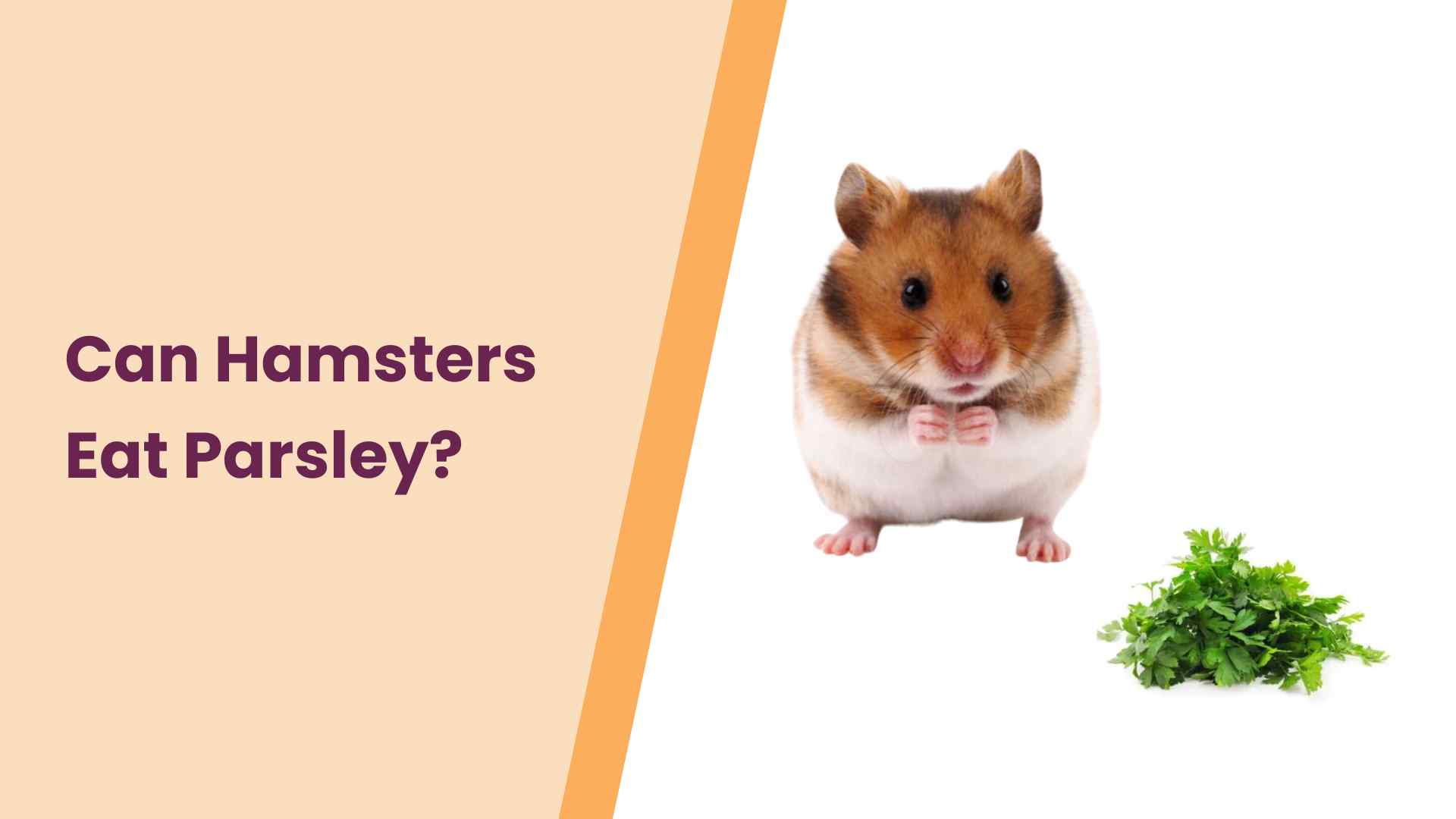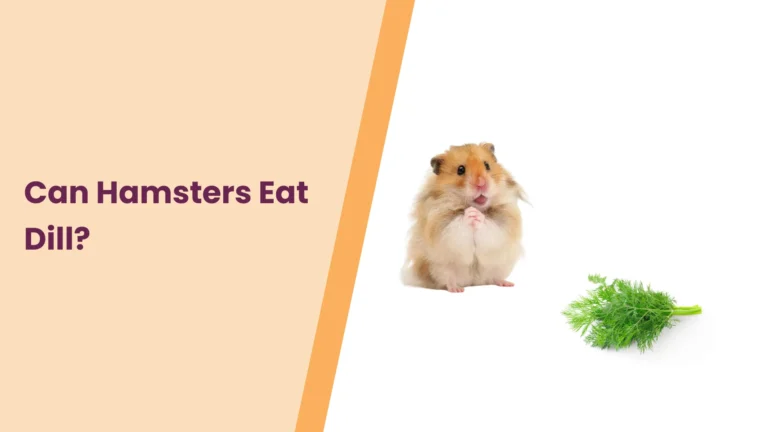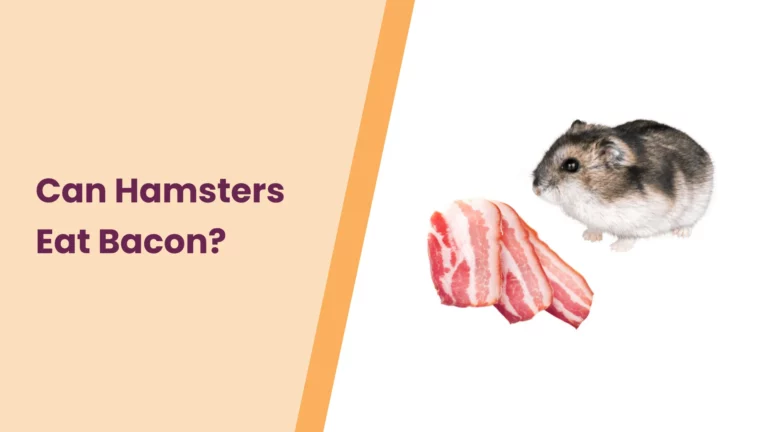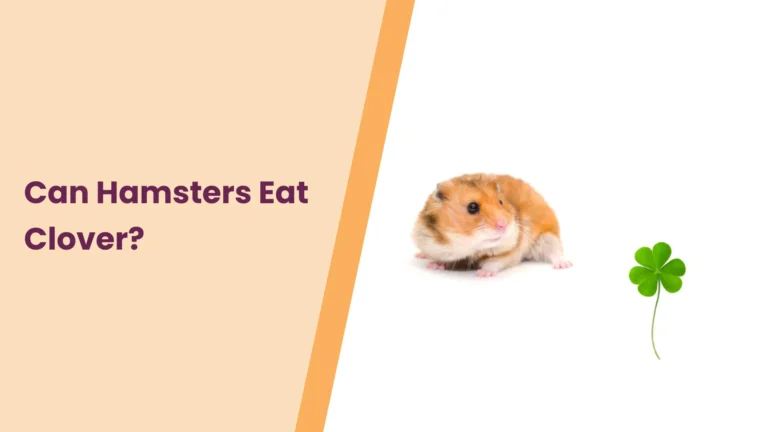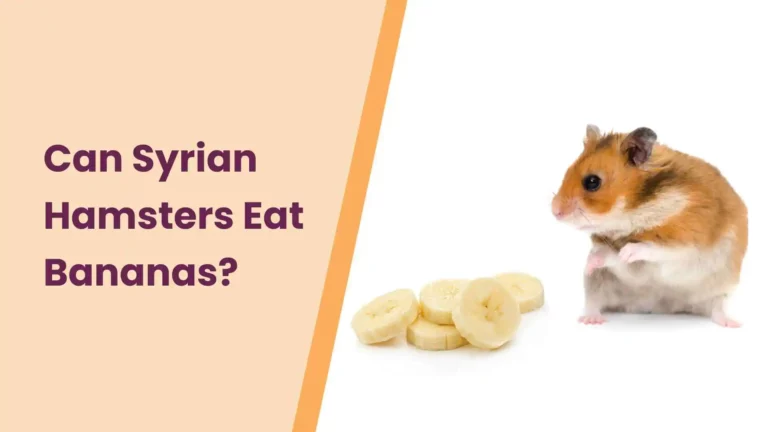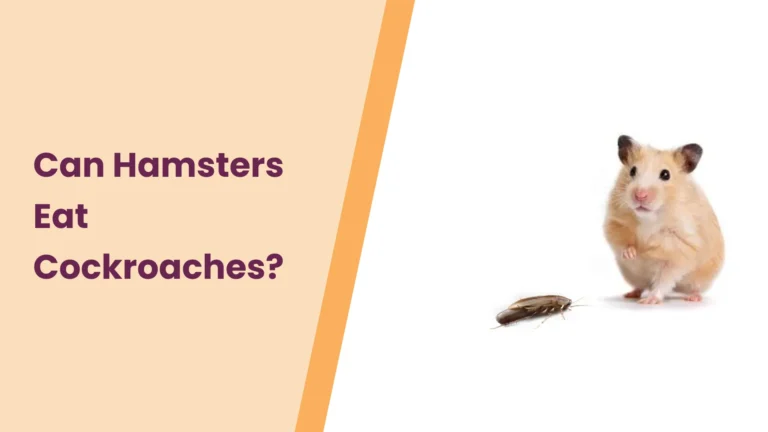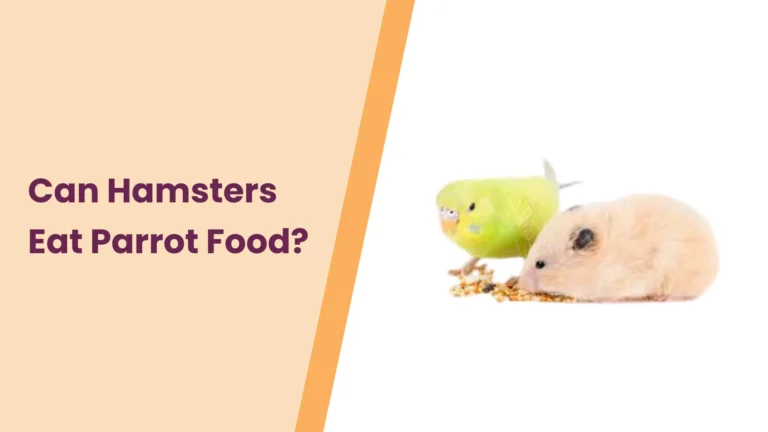Can Hamsters Have Parsley? All You Need To Know
Have you ever wondered what delightful treats you can offer your furry, pint-sized companion? As hamster owners, we strive to provide our little friends with the best care and nutrition. It’s only natural to want to explore the world of potential snacks and foods that can bring joy to their tiny hearts.
One question that often arises is, “Can hamsters have parsley?” In this comprehensive guide, we’re going to peel back the leafy layers and reveal the delicious secrets of parsley for your beloved hamster.
So, fasten your seatbelts as we embark on this flavorful journey to discover whether parsley is a delightful addition to your hamster’s diet or a leafy luxury they should steer clear of.
Understanding Hamster Diet – Fueling Their Tiny Engines
When it comes to caring for our pint-sized pals, one of the first lessons to master is understanding the intricacies of their diet. Hamsters are small creatures with delicate digestive systems, making it crucial for us, as responsible pet owners, to provide them with a balanced and nourishing menu.
The essential components of a hamster’s diet include:
Protein: Hamsters require a moderate amount of protein, typically found in their commercial food mix. Ensure that the protein content doesn’t exceed 20% to avoid health issues.
Fiber: Fiber is essential for a hamster’s digestion. Provide access to hay or other fibrous greens.
Vitamins and Minerals: Fresh fruits and vegetables offer a wealth of vitamins and minerals that are crucial for their overall health.
Water: Access to clean, fresh water is vital for their well-being.
Portion control is key. Due to their small size, hamsters should be offered small portions to prevent overfeeding and obesity. An overfed hamster can suffer from health issues, so always measure their food servings carefully. It’s important to remember that every hamster is unique, and their preferences can vary. Some might adore certain vegetables, while others might not show much interest. It’s essential to be patient and observant as you curate the perfect menu for your furry friend.
Nutritional Value of Parsley – A Green Powerhouse for Hamsters
Parsley, with its vibrant green leaves and distinct flavor, is a staple herb in many human dishes. But what about our little, whisker-twitching companions? Is parsley a nutritious addition to their diet? Let’s uncover the verdant secrets of parsley and its potential benefits for your hamster.
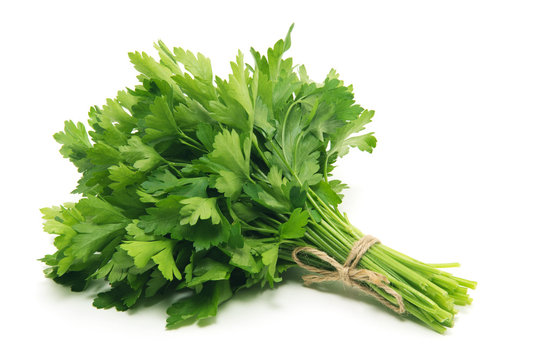
Parsley is more than just a garnish; it’s a nutritional powerhouse. This herb is packed with vitamins and minerals, and it can be a source of wholesome goodness for your furry friend. Here’s a glimpse into the nutritional value of parsley:
Vitamin C: Parsley is rich in vitamin C, a vital nutrient for hamsters. This vitamin supports their immune system and overall health.
Vitamin K: Vitamin K plays a role in blood clotting and bone health. Parsley offers a decent dose of this essential nutrient.
Folate: Folate, also known as vitamin B9, is essential for cell division and growth. It’s found in good quantities in parsley.
Iron: Iron is crucial for oxygen transport in the blood. Parsley contains iron, albeit in smaller amounts.
Antioxidants: Parsley is loaded with antioxidants that combat harmful free radicals, promoting better health and longevity.
Fiber: Like many leafy greens, parsley contains dietary fiber, which can aid in digestion and maintain a healthy gut.
While parsley boasts these nutritional benefits, it’s essential to remember that hamsters require a balanced diet. Incorporating a variety of fresh foods into their meals can provide a well-rounded nutritional profile.
Can Hamsters Eat Parsley? – Exploring the Herb’s Suitability
The question that brings us to the heart of this discussion is, “Can hamsters eat parsley?“. The short answer is yes, parsley is indeed nutritious, but like any food, it comes with considerations for our tiny companions. Here’s what you need to know:
1. Safe Parsley Varieties: Hamsters can safely enjoy flat-leaf (Italian) parsley and curly parsley in moderation. It’s important to use fresh, pesticide-free parsley to minimize any potential risks.
2. Moderation Is Key: While parsley has its merits, it should be given in moderation as part of a well-balanced diet. Small quantities, typically a small sprig or a few leaves, are sufficient to provide the benefits without overloading your hamster.
3. Variety Matters: A varied diet is essential for hamsters’ health. So, consider parsley as an occasional treat rather than a daily staple. Incorporate a range of fresh vegetables and herbs to ensure a balanced menu.
4. Wash Thoroughly: Always wash parsley (and any fresh produce) thoroughly before offering it to your hamster. This helps remove any potential pesticides or contaminants.
5. Watch for Allergies: As with any new food introduction, monitor your hamster’s reaction when offering parsley for the first time. Some hamsters may have allergies or sensitivities to certain foods, so be vigilant.
6. Freshness Is Key: Freshness matters. Ensure the parsley you provide is crisp and free from signs of spoilage. Wilted or moldy parsley should never be given to your pet.
7. Avoid Toxic Varieties: Some types of parsley, like water parsley and fool’s parsley, are toxic and should never be offered to hamsters. Stick to the safe varieties mentioned earlier.
By following these guidelines, you can make an informed decision about whether to include parsley in your hamster’s diet. It can provide a tasty change from their regular fare and offer some health benefits, but always remember that balance and moderation are the keys to keeping your furry friend happy and healthy.
Risks and Precautions – Keeping Your Hamster Safe with Parsley
While parsley can be a nutritious addition to your hamster’s diet, it’s essential to be aware of potential risks and take necessary precautions to ensure your furry friend’s well-being. Let’s explore the potential pitfalls and how to keep your hamster safe when introducing parsley into their meals.
1. Pesticides and Contaminants: The biggest concern when offering parsley or any fresh produce to your hamster is the presence of pesticides or contaminants. To mitigate this risk, wash parsley thoroughly, and consider using organic parsley when possible.
2. Moderation is a Must: Overindulgence in parsley can lead to digestive issues. While parsley is a valuable source of nutrients, it should only be an occasional treat in your hamster’s diet. Excessive consumption can upset their stomach or lead to diarrhea.
3. Allergic Reactions: Just like humans, hamsters can have food allergies or sensitivities. When introducing parsley, monitor your hamster closely for any signs of adverse reactions, such as changes in behavior, skin irritation, or digestive problems.
4. Food Hygiene: Always maintain proper food hygiene. Avoid feeding your hamster wilted or moldy parsley, as this can lead to health issues. Clean their food bowl regularly to prevent contamination.
5. Toxic Varieties: Never, under any circumstances, offer toxic parsley varieties like water parsley or fool’s parsley to your hamster. Stick to safe options like flat-leaf (Italian) parsley or curly parsley.
6. Age and Health Factors: Consider your hamster’s age and overall health when adding new foods to their diet. Young hamsters and those with preexisting health conditions may be more sensitive to dietary changes, so consult with a veterinarian if you have concerns.
By understanding these risks and taking necessary precautions, you can ensure that parsley becomes a safe and enjoyable addition to your hamster’s menu. Always prioritize your pet’s well-being and remember that a balanced diet is key to keeping them happy and healthy.
Parsley Serving Suggestions – Making Mealtime Enjoyable for Your Hamster
Now that we’ve explored the ins and outs of parsley for hamsters, it’s time to discuss how to serve this vibrant herb to your furry companion. With the right portion sizes and preparation methods, you can make parsley a delightful addition to their dining experience.
1. Proper Portion Sizes: Hamsters are tiny creatures, so it’s crucial to offer parsley in appropriate portion sizes. A small sprig or a few leaves of parsley is sufficient for a single serving. Avoid overloading their food bowl with parsley to maintain balance in their diet.
2. Freshness Matters: Ensure the parsley you serve is fresh and crisp. Wilted or spoiled parsley should be discarded, as it can lead to health issues.
3. Washing and Preparation: Before serving, wash the parsley thoroughly to remove any potential contaminants. Pat it dry to prevent excess moisture, which can lead to spoilage in your hamster’s habitat.
4. Variety is Key: While parsley is a delightful treat, remember that variety is essential in your hamster’s diet. Rotate parsley with other fresh vegetables and herbs to keep their menu interesting and balanced.
5. Feeding Time: Consider offering parsley during your hamster’s active hours, typically in the evening or early morning. This aligns with their natural feeding patterns and ensures they can enjoy their meal when they’re most active.
6. Observation: Watch your hamster as they enjoy their parsley treat. This not only allows you to witness their adorable munching but also ensures they’re not experiencing any adverse reactions. If you notice any unusual behavior or signs of distress, consult with a veterinarian.
By following these serving suggestions, you can enhance your hamster’s mealtime and provide them with a delightful and safe dining experience. Parsley, when offered in the right way, can be a flavorful addition to their diet without compromising their health.
Alternatives to Parsley – Exploring a Variety of Healthy Greens and Herbs
While parsley can be a delightful addition to your hamster’s diet, it’s important to offer a diverse range of fresh foods to keep them healthy and engaged. Here, we’ll explore some excellent alternatives to parsley, providing your hamster with a spectrum of nutritious options.
1. Cilantro: Like parsley, cilantro is a flavorful herb that hamsters often enjoy. It’s packed with vitamins and minerals, making it a great choice for a tasty change.
2. Basil: Fresh basil leaves can be a fragrant and nutritious treat for your hamster. It’s a source of vitamins and antioxidants.
3. Dandelion Greens: Dandelion greens are not only safe but also nutritious for hamsters. They provide a variety of vitamins and minerals, adding a touch of bitterness to their diet.
4. Lettuce: Leafy greens like romaine or leaf lettuce can be a refreshing option. Ensure it’s free from pesticides and rinse it thoroughly before offering it to your hamster.
5. Spinach: While spinach is a nutritious choice, it should be fed in moderation due to its oxalate content, which can cause kidney issues if over consumed.
6. Carrots: Small pieces of fresh carrots can be a crunchy and nutritious treat for your hamster. Carrots are rich in vitamin A.
7. Bell Peppers: Bell peppers come in vibrant colors and offer vitamin C. Your hamster will appreciate the crunchy texture and sweet taste.
8. Dill: Dill is another herb that hamsters tend to enjoy. It adds a unique flavor to their diet.
9. Chicory: Chicory greens have a slightly bitter taste, which some hamsters like. They’re a source of vitamins and fiber.
When introducing new foods, always start with small portions and monitor your hamster for any adverse reactions. Every hamster has unique preferences, so it might take some trial and error to discover their favorite greens and herbs. By incorporating these alternatives into your hamster’s diet, you’ll provide them with a variety of flavors, textures, and nutrients, ensuring their diet remains balanced and enjoyable.
Conclusion
In the world of hamster care, the question of whether hamsters can have parsley is just one piece of a much larger puzzle. As loving pet owners, we’re entrusted with the responsibility of not only providing for our tiny companions but also ensuring their well-being. Parsley, with its vibrant green allure and nutritional benefits, can indeed be a flavorful addition to your hamster’s diet when served in moderation.
However, responsible hamster care goes beyond a single herb. A balanced diet, enriched with a variety of fresh greens and herbs, keeps your hamster’s meals exciting and nutritious. Alternatives like cilantro, basil, and dandelion greens offer a diverse palate, ensuring their dining experience is both wholesome and engaging.
Ultimately, the key to nurturing your hamster’s health and happiness lies in understanding their dietary needs, exercising caution with new foods, and observing their reactions closely. By following these guidelines, you’ll provide your hamster with a life filled with delightful flavors and cherished moments.
Remember, your hamster depends on you for their care, and with the right knowledge and attention, you can ensure their days are filled with joy, health, and the occasional parsley treat.
“We’ve embarked on a journey through the flavorful world of hamster care, and we’d love to hear from you! Do you have any personal experiences or tips to share about feeding parsley to your hamster, or perhaps you’ve discovered some favorite herbs they adore?
Your insights are invaluable, so please feel free to drop your thoughts in the comments section below. Sharing your knowledge and stories not only enhances our understanding but also brings our community closer together. If you found this article helpful and think it could benefit other hamster enthusiasts, don’t hesitate to share it on your favorite social media platforms.
Let’s spread the word about responsible hamster care, one delightful blog post at a time. Your support means the world to us, and together, we can create a richer and more informed environment for all hamster lovers out there.” – Hamsterpit.

